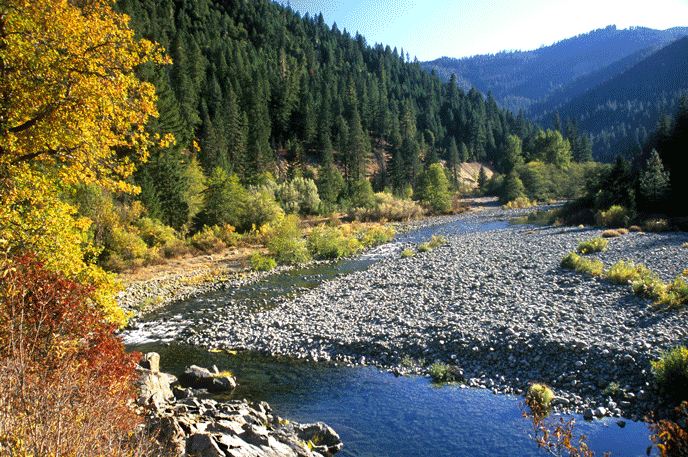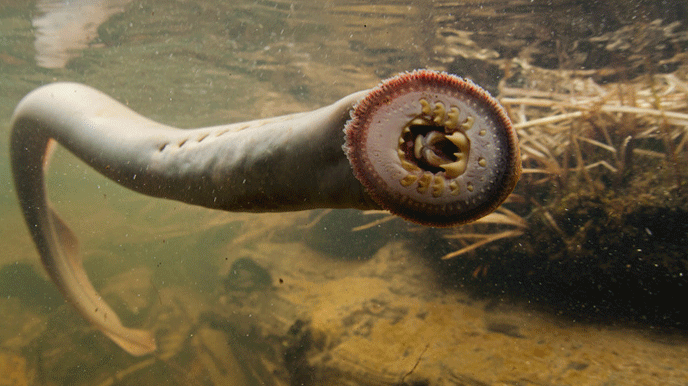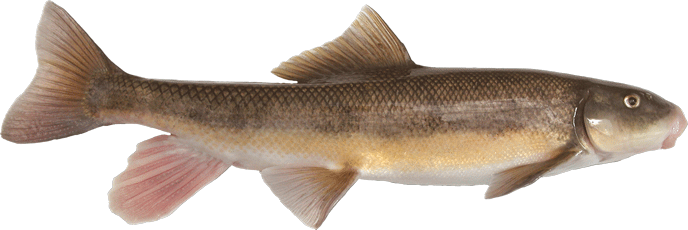
USFS Salmon and trout are the superstars of Redwood National and State Parks streams, famous for their huge size, streamlined beauty, former abundance, importance to native cultures and local economies as well as their popularity with fishermen. There are, however, a number of other native freshwater fish in park streams that deserve a little recognition too. They may not be as famous, handsome, or as large, but all of them are interesting in their own unique ways. 
Dave Herasimtschuk Lamprey Two species of lamprey can be found in Redwood National and State Parks, Pacific lamprey (Entosphenus tridentatus) and western brook lamprey (Lampetra richardsonii). Both species are found in all park streams that have salmon and trout. Pacific lamprey are an important traditional food for local Native Americans. They are colloquially known in the region as “eels”, but are unrelated to true eels. Lamprey instead belong to an incredibly ancient lineage of fish that date back over 350 million years, predating the existence of dinosaurs and redwoods. They have cartilaginous skeletons instead of bony skeletons like all other local freshwater fish, and have relatively simple internal organs, indications of their long existence on Earth. Instead of a hinged jaw, lamprey have a sucker shaped mouth with rasping teeth. They spend a long period of their lives (two to seven or more years) living underneath small, loose, gravel covered stream beds, filter feeding the water flowing through the gravel. During this life stage they are known as ammocoetes. Young adult lamprey emerge from the stream bed and stay in the same stream if they are a brook lamprey or migrate downstream and into the ocean if they are a Pacific lamprey. Pacific lamprey adults eventually latch on to larger fish and live parasitically on the blood and body fluids of host fish. Brook lamprey do not feed as adults, but instead only breed. After a few years at sea, Pacific lamprey migrate back up streams, no one knows if they go to their natal stream, to dig small, circular nests or “redds” to mate, lay eggs, and then die. Brook lamprey spawn in a similar manner, but in the same stream they have lived in their whole lives. Lamprey have gone extinct in many western streams due to habitat and water quality changes and there is increasing concern about their long term future in many of the streams where they still exist. 
Rene Reyes Suckers Klamath small scale suckers (Catostomus rimiculus) are found in the Klamath and Smith Rivers while Sacramento suckers (Catostomus occidentalis) are found in Redwood Creek. Suckers get their funny name from their sucker like, downward facing mouths. Suckers primarily graze on stream bottoms eating algae, diatoms and detritus. As young adults, they may form relatively large schools as they move from area to area searching for food and cover and can be active all day. Adult suckers tend to stay under rocky ledges, cutbanks, submerged logs and overhanging vegetation during the day, only becoming active at night. Adults can reach up to approximately 18 inches (45 cm). Spawning occurs in upstream areas in groups on stream bottoms, with multiple males attending single females. Suckers reach adulthood at age three to four and can live up to ten years. 
Rene Reyes Sculpin There are also two species of sculpin found in the lower reaches of Redwood National and State Parks streams, prickly (Cottus asper) and coastrange (Cottus aleuticus). These two small species usually reach no longer than six inches (15 cm). Much of their time is spent near stream bottoms where they feed on a wide variety of small prey at night. Like suckers, adult sculpin are much less active during the day when they tend to hide under cover from predators. Breeding occurs under cover where the male creates and defends a nest. Sculpin are easy to identify by their relatively large pectoral fins that they often hold out away from their bodies. 
Rene Reyes Stickleback Even though they are the smallest common freshwater fish in Redwood National and State Park streams (usually about two inches (5 cm) long), the three-spined stickleback (Gasterosteus aculeatus) are definitely not the least interesting. Male sticklebacks engage in an elaborate mating ritual that involves building a small pit with a circular structure of glued together debris placed inside. A male then makes a tunnel through the structure and then conducts a back and forth mating dance in front of his “stage”. Males also take on a bright orange-red hue and their eyes turn shiny blue during the mating season. If a male is successful in luring a female, he’ll lead her through the tunnel where she deposits her eggs and he fertilizes them. He will then defend the nest and eggs from all rivals and predators. Males even protect hatched juveniles by scooping them up with their mouths and spitting the young back into the nest until they are big enough to stay safe in open water. Beyond complicated breeding behaviors, individual sticklebacks also appear to “cooperate” with other individual sticklebacks to investigate potential predators, thereby benefitting themselves and strangers. Finally, sticklebacks have an amazing ability to rapidly evolve in changing conditions, sometimes converting from anadromous (ocean living but freshwater breeding) physiologies to permanent freshwater physiologies, and even further evolving into deep and shallow water forms, in just a matter of decades. For all these reasons and more, sticklebacks have long been favorite study subjects for biologists.
|
Last updated: November 21, 2017
